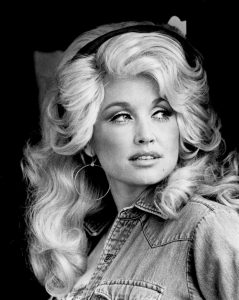As reporters and health officials walked onto the grounds of the mass suicide in Guayana, they were in shock over what they were seeing; hundreds of bodies face down on the ground, dead. One person who was at the site said that the amount of dead bodies was appalling, “it was depicted as not American, not religious, not sane, and ultimately not human.”1 Over 550 bodies of the 900 were unclaimed for almost six months until US Officials decided to cremate them. Once they brought the bodies back to the United States from Guayana, many Americans didn’t think it was right to have these bodies spread out on American soil because of the act they made. US Officials then decided to scatter the ashes of the dead bodies away from the United States border lines.

It all started with Jim Jones. Jones was a religious/political cult leader who had established the People’s Temple as a sect in Indianapolis in the 1950s. His cult focused on themes of communism, and the fight against racism, attracting many African Americans. He moved his cult to San Francisco in 1971, but it would not remain there for long. Soon after the group moved there, Jones was accused of financial fraud, physical abuse of his cult’s members, and mistreatment of children. After Jones was accused, in 1973, he became paranoid that someone would try to destroy his cult, so he moved his entire group to Guayana, South America, to build a socialist utopia known as Jonestown.

Once the cult moved to Guayana, people started to question even more the accusations being made against Jim Jones. Members who had left or escaped the cult were worried for the people still in the cult, so they convinced U.S. Congressmen Leo Ryan of California to fly to Guyana. “In November 1978, Ryan along with a group of journalists and relatives of cult members went to investigate the charges.”2 Jones did not like the idea of people coming to investigate, so he ordered his followers to have Ryan and his investigators assassinated. He ordered the attack on the group as they were returning to the airstrip to leave. A journalist named Charles Krause reported that that morning Ryan was attacked by a man with a knife, although he was not hurt by the incident. “Later that same day, Ryan and his party were attacked by assassins at the Port Kaituma Airstrip. Ryan and four others were killed and ten were injured.”3 While these killings were going on, Jones feared that he would lose his cult members and they would turn against him. He then proceeded to lead his people through a mass suicide, which was something the members had repeatedly practiced since the early 1970s.
These practices were called “White Nights” and consisted of members drinking a liquid that they believed was poisonous as a loyalty test to Jones.4 During these “White Nights,” people were woken up by a loud speaker, and they would assemble for the ritual of passing around a drink of kool-aid, which they were told was poison. Unfortunately, this time was not a test. Hundreds of adults and children lined up to drink this colorful, fruit-flavored punch, which contained cyanide and tranquilizers. Most of them thought they were just proving their loyalty as before, but as more people began to die, they realized that this time it was real. “Over 260 children, for example, had the poison given to them, while only about 40 adults escaped.”5 For those who died willingly though, collective suicide held a religious significance in the context of the worldview that had been established in Jonestown.

Collective suicide was a ritual that signified a purity of commitment to the community. On the night that they all drank this poison, Jim Jones announced “that the members of the community were united as black, proud socialists.”6 Collective suicide also promised release from a world dominated by what Jones perceived as American racism, capitalism, and fascism. He did not want to be captured and taken back to America, so instead he urged his followers to drink the poison, and “step out of the world.”7 Jones had told his followers that they were not committing suicide, but rather they were performing an act of freeing themselves from the harsh world that they lived in. There are later reports that when officials went to Jonestown, Jim Jones was found with gunshot wounds, raising the speculation that either he had committed suicide or someone else had killed him.
The Jonestown Massacre was the largest mass suicide in modern history and resulted in the largest single loss of American civilian life in a non-natural disaster until the September 11 attack in 2001. The mass suicide resulted in over 900 deaths of innocent lives. Once the bodies were found, the Guyanese government asked the United States to take the bodies back. US Officials decided to start sending a few people over to identify bodies so they could decide what to do with them. Over 500 bodies were unclaimed and that is when the United States decided to have the US Air Force come in to take the bodies back to the United States.”8 To this day, families of loved ones are still trying to find a memorial place for the lost lives.
- Encyclopedia of Religion, 2005, s.v. “Jonestown and Peoples Temple,” by David Chidester. ↵
- Dictionary of American History, 2003, s.v. “Jonestown Massacre,” by Carolyn Bronstein. ↵
- Dictionary of American History, 2003, s.v. “Jonestown Massacre,” by Carolyn Bronstein. ↵
- Dictionary of American History, 2003, s.v. “Jonestown Massacre,” by Carolyn Bronstein. ↵
- Encyclopdeia of Religion, 2005, s.v. “Jonestown and Peoples Temple,” by David Chidester. ↵
- Encyclopdeia of Religion, 2005, s.v. “Jonestown and Peoples Temple,” by David Chidester. ↵
- Encyclopdeia of Religion, 2005, s.v. “Jonestown and Peoples Temple,” by David Chidester. ↵
- Encyclopdeia of Religion, 2005, s.v. “Jonestown and Peoples Temple,” by David Chidester. ↵



150 comments
Evelin Joseph
By describing the setting that was present in Guayana, this article pulls the reader in and makes them want to find out more about this tragic event. I had never before heard of this historical event, so was very surprised to know about Jim Jones and his “utopia” Jonestown. It is very depressing to know that a group of people that had put their trust and belief into a person was later let down and eventually even lost their lives because of him.
Valeria Hernandez
Lianna Ybarra did a great introducing quotes and real testimonies showcasing her validity. The article was truly shocking; however, Ybarra writing style creates an objective tone. Her introduction builds up to the facts. Based on facts she tells the story of Jim Jones and his involvement in the death of over 900 innocent victims. I was not familiar with the Jamestown massacre Ybarra article was informative and remain without prejudice.
Rafael Azuaje
About a month ago I watched a documentary named Jonestown: The Life and Death of Peoples Temple. It was really tragic. One thing that struck me was how Congressman Ryan was willing to go into such a risky place for his constituency. It does makes me wonder one thing. How many politicians today would be willing to risk their lives for the Americans they represent?
Alexis Renteria
This is truly a sad and horrifying article. Its crazy how Jim Jones took these many people and made them believe in his vision and as well made all of them loyal to him. So loyal that they would drink poison for their leader. It makes me think that if Jones followers were loyal enough to drink poison to show their loyalty were they even capable of shooting their leader ? Overall this was a very well written article that keeps the reader interested.
Ian Hammock
I find it interesting that the only other loss of American civilian lives as a result of non-natural causes or disasters as impactful as The Jonestown Massacre is the 9-11 terror attacks. Because each event was powered by radical faith. In the Jonestown case loyalty was to Jim Jones, but in the 9-11 attacks loyalty was being proven to terrorist group Al Qaeda. I also recognize the connection that suicide is the cause of death in these two tragic cases of American casualties.
Aaiyanna Johnson
I’ve never of this historical occurrence before, but thanks for the very educational piece. This article is so gripping, and enticing. I like how unbiased it is. This showed a side of humanity where people are willing to anything with the right manipulation. It was very eye-opening for me and how deceiving a political leader can be with cruel intent and no empathy in mind.
Matthew Rios
A wonderful article that stuck straight to the bare bones story regarding the situation that unfolded at Jonestown. Only thing I noticed was that it left out quite a bit of detail regarding the discrepancies in media reports and alleged CIA ties of certain individuals involved like Richard Dwyer, etc. I think it’s always important to incorporate the discrepancies of any story with heavy “hole seeking” research to further shape the publication’s truthful, but questioning appearance and nature. I believe with any story that there are more questions than answers and that those questions are often ignored, or never asked.
Justin Garcia
Articles can range in tone from comedic to informative. It is always good to have an article share hope and other upbeat emotions. For as much good news their is to be shared it is dark, shocking and informative articles that really inspire change. These types of articles shed light on topics and events that would not be widespread without the aid of articles and other news outlets. By this article informing the masses about a tragedy that occurred it is paving the way for others to prevent a similar event from occurring. Jonestown is just one of the many tragedies that occur in our world today. This article does well in not only informing us of the events in Guayana but has the potential to inspire others to act.
Benjamin Voy
Although harrowing, this was a great read as I was thoroughly interested throughout. I find it shocking that Jim Jones was able to convince these innocent people to commit to his ideology and all of the sacrifices that came with it. I believe that all of the accusations towards Jones were true as no innocent man would flee the country when accused and then insist on having all of his peers commit suicide when worried of a revolt against him. I will always wonder if Jones also committed suicide or was shot by a fellow cult member before fleeing the scene of such a horrific disaster. A well written and informative piece.
Sam Vandenbrink
Sometimes articles are fun and enjoyable to read, although a great article I would not call this an enjoyable read. This is a crazy story, and rather dark makes someone think about how they can just be doing there every day routine and have life change up on them so quickly. This does make somewhat of a horror story though, a very dark and interesting story too say the least. Excellent story, was also well written smooth and smooth.